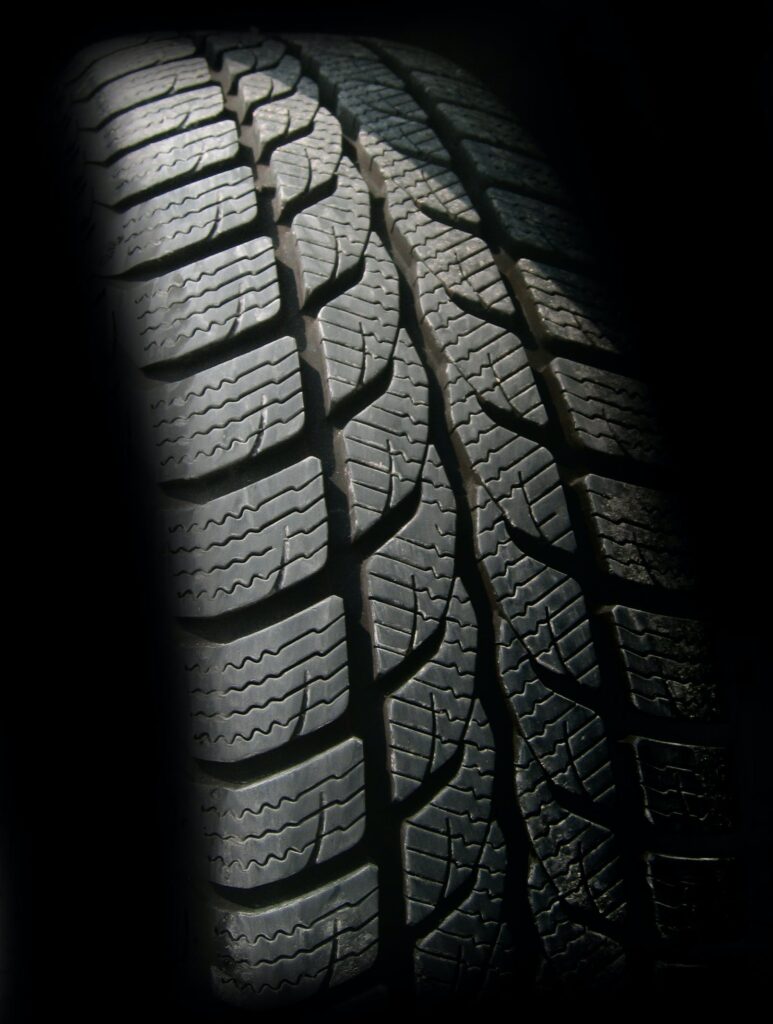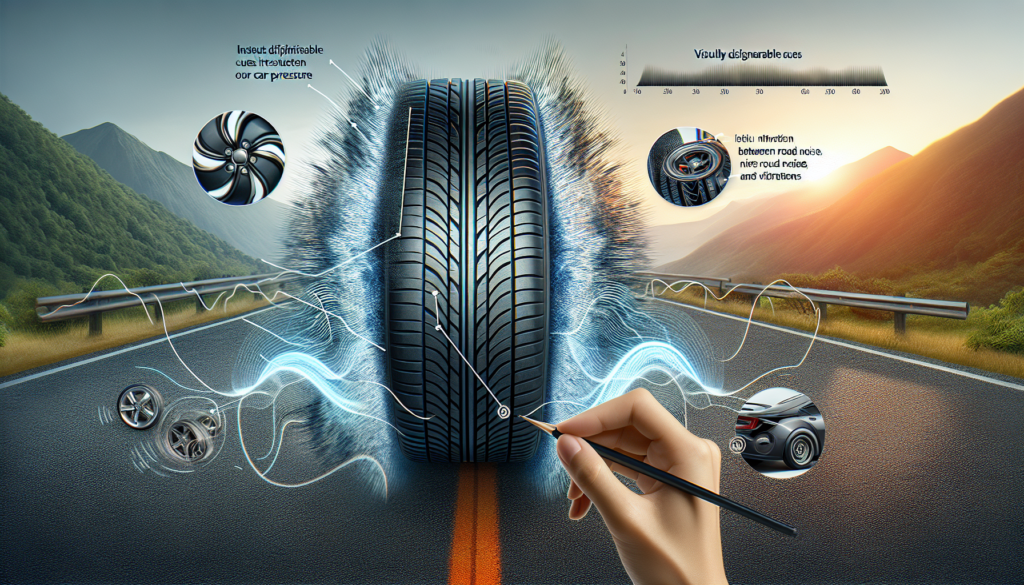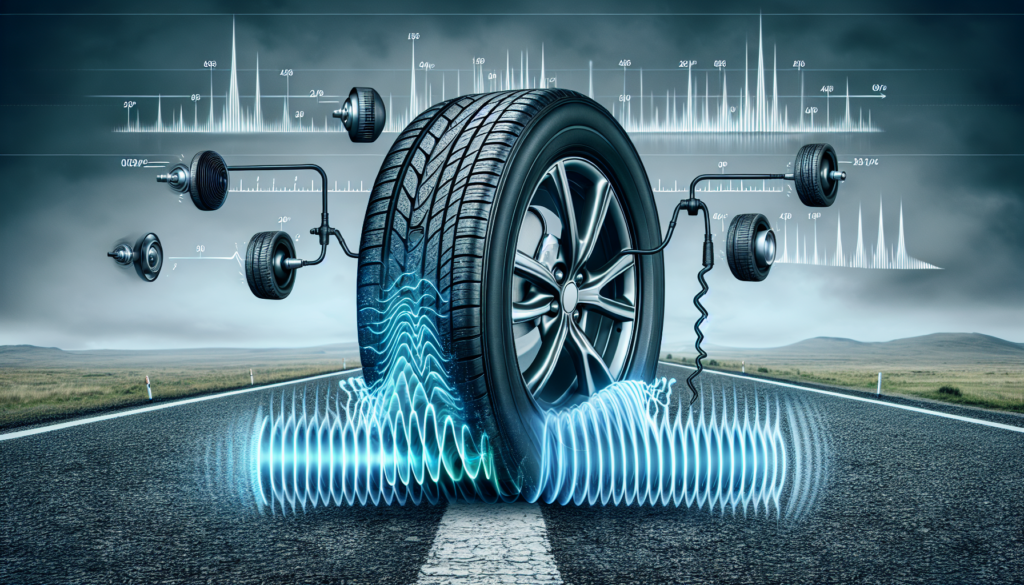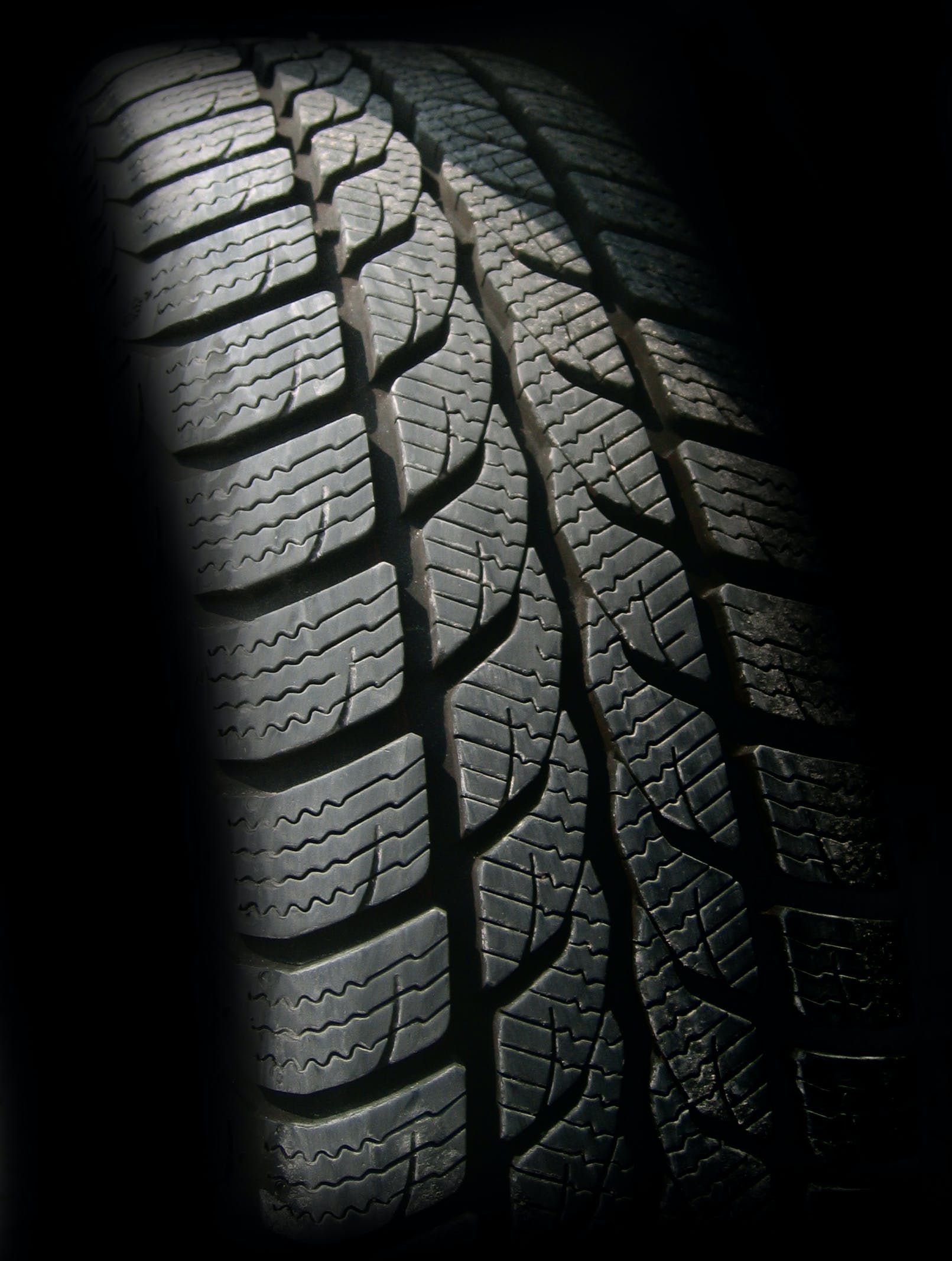Did you know that the tire pressure of your vehicle can actually have an impact on the amount of road noise and vibrations you experience while driving? It’s true! Maintaining the correct tire pressure can help provide a smoother and quieter ride, while also enhancing the longevity of your tires. In this article, we will explore the relationship between tire pressure, road noise, and vibrations, and understand the importance of keeping your tires properly inflated. So, buckle up and get ready to discover the fascinating connection between tire pressure and your driving experience!

Effects of Low Tire Pressure
Increased Road Noise
When your tire pressure is too low, it can result in increased road noise. Low tire pressure causes the tire to make more contact with the road surface, leading to a louder and more noticeable noise as you drive. This is because the tire is not properly inflated and does not have enough air to maintain its shape and firmness. The increased road noise can be distracting and annoying, making your driving experience less enjoyable.
Excessive Vibrations
Low tire pressure can also lead to excessive vibrations while driving. When the tire is under-inflated, it is more likely to flex and bend, causing uneven contact with the road surface. This uneven contact creates vibrations that can be felt throughout the vehicle, especially in the steering wheel and the seats. Excessive vibrations can make your ride uncomfortable and may even affect your ability to control the vehicle properly.
Reduced Handling and Stability
Another effect of low tire pressure is reduced handling and stability. When the tire pressure is too low, the tire becomes soft and less responsive. This can affect your ability to steer the vehicle and maintain control in various driving conditions, such as during turns or emergency maneuvers. The lack of stability can make your vehicle feel less agile and may increase the risk of accidents.
Effects of High Tire Pressure
Potential Increase in Road Noise
While low tire pressure is known to increase road noise, high tire pressure can also have a similar effect. When the tire is over-inflated, it becomes stiffer and has less contact with the road surface. This can result in a potential increase in road noise, although it may not be as pronounced as in the case of low tire pressure. The excess air pressure can cause the tire to bounce and vibrate against the road, generating unwanted noise.
Increased Vibrations
High tire pressure also leads to increased vibrations. When the tire is over-inflated, it becomes more rigid, making it less able to absorb bumps and road imperfections. As a result, the vibrations caused by uneven road surfaces are transmitted directly to the vehicle, making the ride less smooth and comfortable. The increased vibrations can also affect the handling and stability of the vehicle, compromising your driving experience.
Reduced Ride Comfort
Similar to low tire pressure, high tire pressure can reduce ride comfort. The stiff and rigid nature of an over-inflated tire can make the vehicle feel harsh and uncomfortable, especially on rough roads. The lack of cushioning provided by the tire can result in a jarring and bumpy ride, impacting your overall comfort as a driver or passenger.
Optimal Tire Pressure
Manufacturer’s Recommended Pressure
To ensure optimal tire performance and minimize road noise and vibrations, it is best to follow the manufacturer’s recommended tire pressure. This information can usually be found in the vehicle owner’s manual or on a sticker located on the driver’s side door jamb. The recommended tire pressure takes into account various factors specific to your vehicle, such as weight, tire size, and suspension characteristics.
Considering Vehicle Weight
In addition to the manufacturer’s recommendation, it is essential to consider the weight of your vehicle when determining the optimal tire pressure. Heavier vehicles may require higher tire pressures to support the additional load, while lighter vehicles may need lower tire pressures for optimal performance. Be sure to consult the manufacturer’s guidelines or seek advice from a trusted tire professional to determine the appropriate tire pressure based on your vehicle’s weight.
Balancing Comfort and Performance
Finding the right balance between comfort and performance is crucial when determining the optimal tire pressure. While higher tire pressures may offer better fuel efficiency and handling, they can also result in a harsher ride. On the other hand, lower tire pressures may provide a smoother and more comfortable ride but can compromise fuel efficiency and handling. It is essential to consider your driving preferences and priorities to strike a balance between comfort and performance.
Relationship between Tire Pressure and Road Noise
Tire Flexibility and Noise Generation
The flexibility of a tire plays a significant role in generating road noise. When the tire is properly inflated, it maintains its intended shape and flexibility, allowing it to absorb road irregularities and minimize noise. However, when the tire pressure is too low, the tire becomes softer and more flexible, making it prone to bending and vibrating against the road surface. This increased flexibility can contribute to the generation of road noise, resulting in a louder and less enjoyable driving experience.
Impact of Tire Contact with Road Surface
The contact between the tire and the road surface also influences the amount of road noise generated. When the tire pressure is too low, the tire makes more contact with the road, increasing the surface area in contact with the pavement. This larger contact area leads to more friction and a greater likelihood of noise generation. Maintaining the optimal tire pressure ensures that the tire maintains the ideal contact patch with the pavement, minimizing noise production.
Tire Tread Design and Noise Levels
The design of the tire tread can also affect the levels of road noise. Different tread patterns and designs have varying degrees of noise generation. Some tire treads are specifically designed to reduce road noise by incorporating noise-canceling features or using specific block patterns to minimize vibrations. When selecting tires, it is worth considering the tread design and its potential impact on road noise levels.

Relationship between Tire Pressure and Vibrations
Tire Contact Patch and Vibrations
The size and shape of the tire’s contact patch with the road surface have a significant impact on vibrations experienced while driving. When the tire pressure is too low, the contact patch becomes larger and more uneven, leading to increased vibrations. The uneven distribution of the tire’s contact with the road causes irregularities and bumps to be felt more strongly, resulting in a vibrating sensation throughout the vehicle. Maintaining the right tire pressure ensures a proper contact patch, minimizing vibrations and providing a smoother ride.
Resonance and Harmonic Vibrations
Resonance and harmonic vibrations can also occur when the tire pressure is not properly maintained. When the tire is either over-inflated or under-inflated, it may start to vibrate at certain speeds due to resonance. Resonance refers to a situation where the natural frequency of the tire and the vehicle’s suspension system coincide, resulting in intensified vibrations. Harmonic vibrations, on the other hand, occur when the vibrations have a repeating pattern or frequency. These vibrations can be minimized by keeping the tire pressure within the recommended range.
Effect on Suspension System
Tire pressure directly affects the performance and lifespan of the suspension system. When the tire pressure is too low, the tire can bottom out against the road surface, causing excessive strain on the suspension system. This can lead to premature wear and damage to suspension components, resulting in compromised ride comfort and handling. Conversely, if the tire pressure is too high, it can reduce the suspension’s ability to absorb shocks and vibrations, putting additional stress on the suspension system. Maintaining the optimal tire pressure helps ensure proper suspension function and promotes a smoother ride.
Measurement of Road Noise and Vibrations
Sound Level Meter and Decibels (dB)
Road noise can be measured using a sound level meter that measures the intensity of sound in decibels (dB). This device provides an objective measure of the noise levels produced by the tires. By comparing the noise levels at different tire pressures, it is possible to determine the impact of tire pressure on road noise. Lower tire pressures typically result in higher recorded noise levels, while higher tire pressures tend to produce lower noise levels.
Vibration Sensors and Frequency Analysis
Vibrations can be measured using vibration sensors that detect and quantify the intensity of vibrations experienced while driving. These sensors can be placed strategically throughout the vehicle to capture vibrations in different locations. Frequency analysis allows for an in-depth understanding of the vibrations by breaking them down into their constituent frequencies. This analysis helps identify any resonant frequencies or harmonic vibrations that may be caused by inappropriate tire pressures.

Impact of Tire Pressure on Fuel Efficiency
Rolling Resistance and Energy Loss
Tire pressure significantly impacts fuel efficiency through rolling resistance. Rolling resistance refers to the force required to keep the tire rolling. When the tire pressure is too low, rolling resistance increases. The tire deforms more, creating greater friction between the tire and the road, resulting in energy loss and reduced fuel efficiency. On the other hand, when the tire pressure is too high, rolling resistance decreases, but it can lead to a harsher ride and potentially compromise handling.
Efficient Gas Mileage and Optimal Pressure
Maintaining the proper tire pressure can help optimize gas mileage and improve fuel efficiency. The right tire pressure reduces rolling resistance, allowing the vehicle to move more freely with less energy loss. This translates into improved gas mileage and reduced fuel consumption in the long run. Regularly checking and adjusting tire pressure to the manufacturer’s recommendation can contribute to significant savings at the pump and a more sustainable driving experience.
Importance of Regular Tire Maintenance
Checking Tire Pressure
Regular tire maintenance, including checking tire pressure, is essential for optimal performance and safety. It is recommended to check tire pressure at least once a month or before long trips. Properly inflated tires contribute to better handling, improved fuel efficiency, and a more comfortable ride. By simply using a tire pressure gauge, which can be purchased at most automotive stores, you can quickly and accurately check the pressure of each tire.
Monitoring and Adjusting Tire Pressure
Monitoring tire pressure and making necessary adjustments are crucial to maintain optimal performance. Factors such as temperature changes, tire wear, and driving conditions can affect tire pressure. It is important to periodically check and adjust the tire pressure to ensure it remains within the recommended range. Regularly inspecting and maintaining tire pressure not only enhances safety but also prolongs the lifespan of your tires.
Tire Rotation and Balancing
Regular tire rotation and balancing also play a role in mitigating road noise and vibrations. Tire rotation involves moving each tire to a different wheel position to ensure even wear. This helps maintain balanced handling and minimizes vibrations caused by uneven tire wear. Balancing involves evenly distributing the weight of the tire and wheel assembly to reduce vibrations at higher speeds. Both tire rotation and balancing contribute to a smoother and more comfortable driving experience.

Other Factors Affecting Road Noise and Vibrations
Road Surface and Texture
Road surface and texture have a significant impact on road noise and vibrations. Different road surfaces, such as asphalt or concrete, absorb and reflect sound differently. Additionally, the texture of the road, including its smoothness or roughness, can affect the perceived noise and vibrations. Well-maintained, freshly paved roads tend to generate less noise and vibrations compared to older or poorly maintained surfaces.
Suspension System Condition
The condition of the suspension system plays a vital role in reducing road noise and vibrations. A well-maintained suspension system with properly functioning shock absorbers and suspension components helps absorb and dampen road irregularities, minimizing the transmission of vibrations to the vehicle. Regular inspections and maintenance of the suspension system can ensure optimal performance and ride comfort.
Wheel Alignment
Proper wheel alignment is crucial for minimizing road noise and vibrations. Misaligned wheels can result in uneven tire wear and compromised handling. When the wheels are not aligned correctly, they can generate vibrations that are transmitted to the vehicle and contribute to increased noise levels. Regular wheel alignments not only promote optimal tire performance but also help reduce road noise and vibrations.
Conclusion
Tire pressure plays a significant role in determining road noise and vibrations while driving. Maintaining the optimal tire pressure recommended by the manufacturer, considering the vehicle’s weight, and balancing comfort and performance are key considerations. Low tire pressure can lead to increased road noise, excessive vibrations, and reduced handling and stability. Similarly, high tire pressure can potentially increase road noise, cause increased vibrations, and reduce ride comfort. Regular tire maintenance, including checking tire pressure, monitoring and adjusting as necessary, and performing tire rotation and balancing, is essential for optimum performance. Other factors such as road surface and texture, suspension system condition, and wheel alignment also influence road noise and vibrations. By understanding the relationship between tire pressure and road noise and vibrations, you can enhance your driving experience, improve fuel efficiency, and ensure a safer and more comfortable ride.


